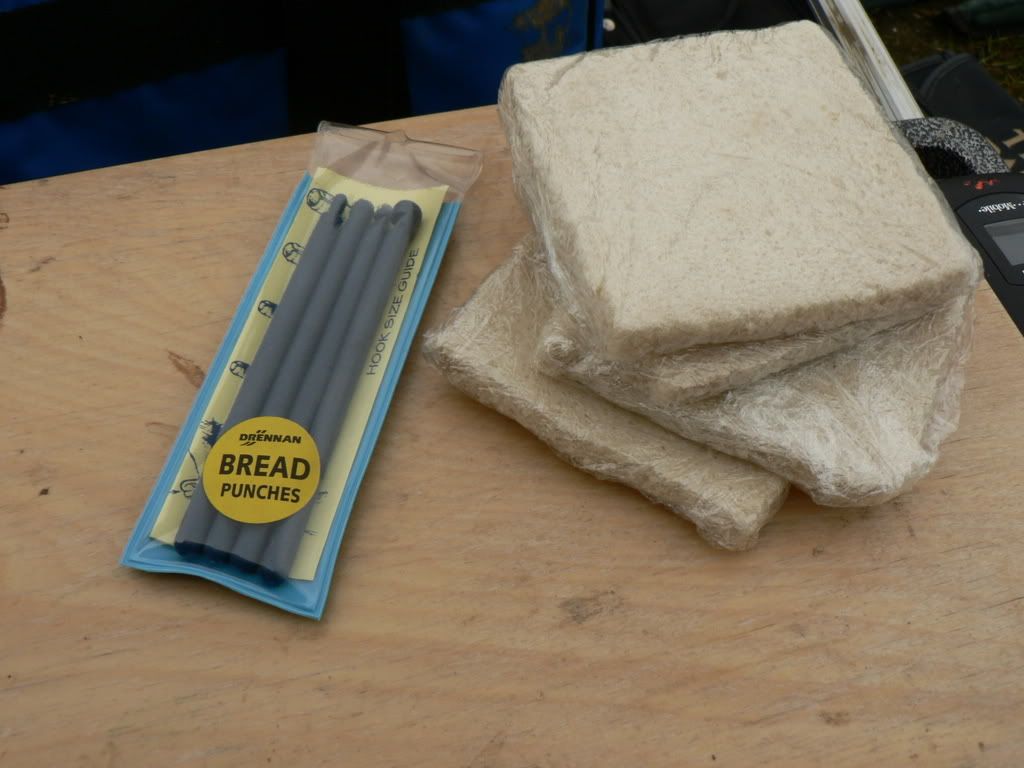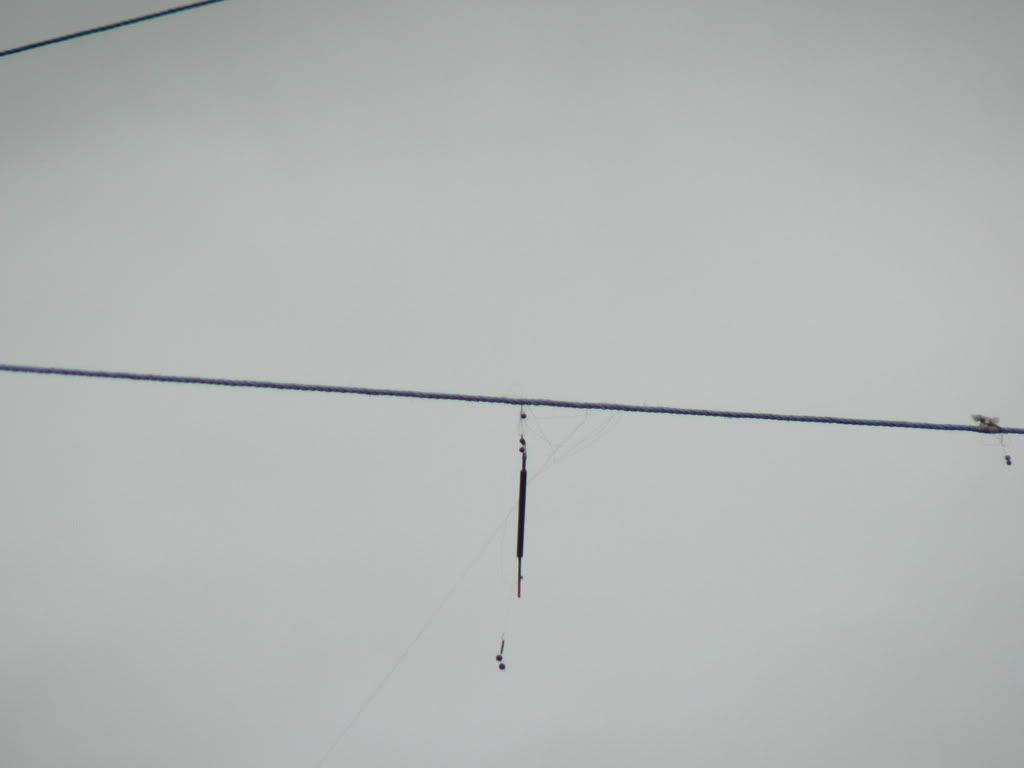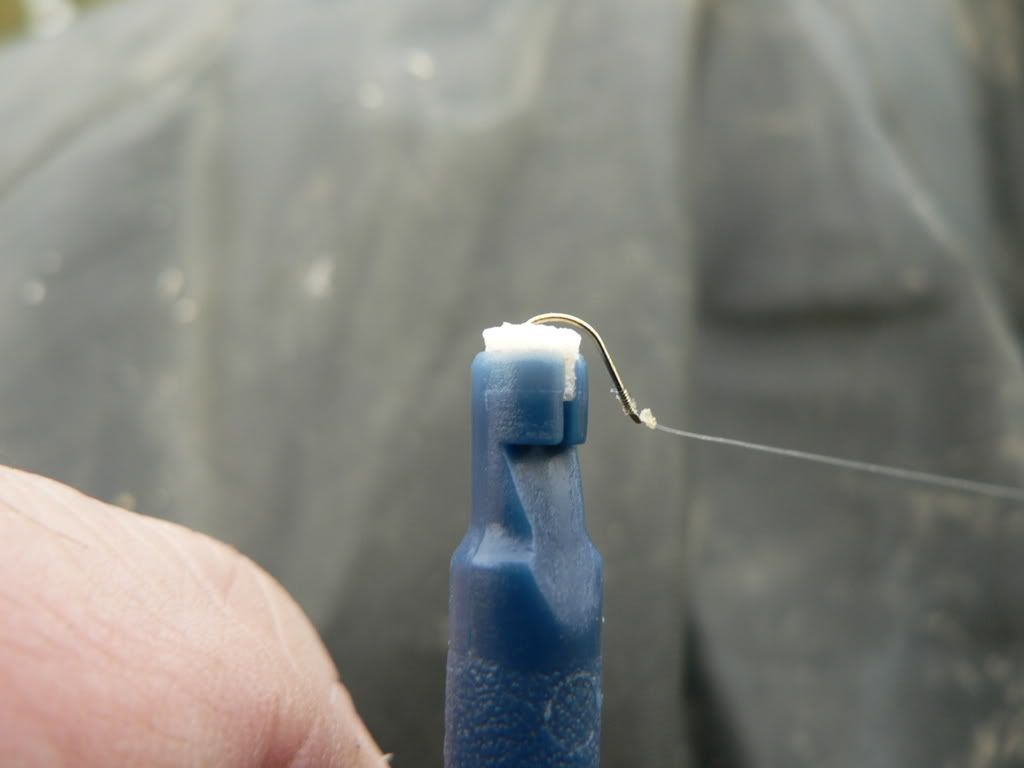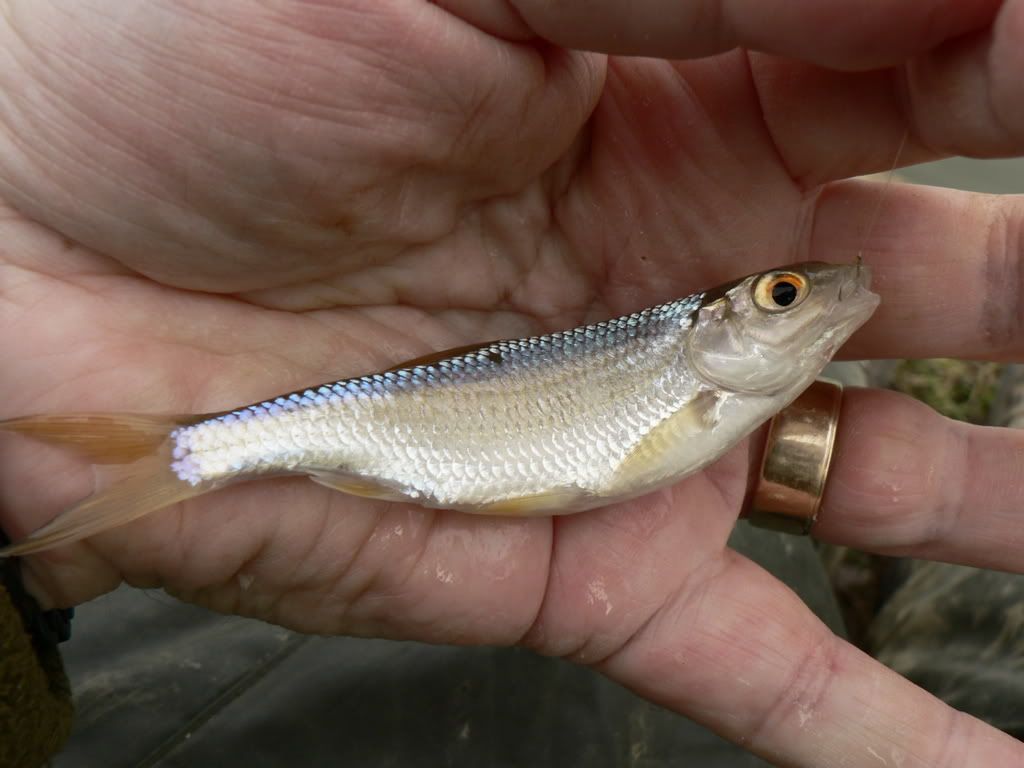Desperately short of time this weekend and only had a short afternoon available so went down to the Willow Pool at Faversham, one of my clubs match waters. I wanted to try a totally new technique (for me) today – Punched Bread. I had read great things about the method – how it would catch when other methods fail, blah, blah, blah.
I got myself a set of Drennan Bread Punches and prepared the slices of white bread the night before by micro-waving for thirty seconds; the slices were then wrapped in cling film to keep them fresh.

The punches (allegedly) were suitable for fishing from hook sizes 26……….all the way up to a size twelve, the size of the punch increasing with the hook size.
When I arrived at the pool I was surprised to see other members present. I suppose the mild conditions of 15°C had brought them out as you generally never see anyone. I decided to leave them to the popular (and productive swims) by the gate and walked on up to the far end of the pool where it is nice and quiet and where I have never seen anyone fishing. Here, there is a quiet corner with few pegs where it is possible to fish in peace whilst all manner of mayhem takes place on the nearby School Pool just the other side of the fence about thirty yards away.

I set up the waggler rod, it being my current favourite method of choice and tied on a size eighteen Tubertini 808 to 0.10 Powerline – loop-to-loop. The shot of my insert peacock were grouped under the float and I had just two number eight shot down the line. Plumbing-up showed four and a half feet of water in the centre of the bay into which I was fishing.
Now the Willow Pool is a very young fishery and the Faversham Angling Club have invested a lot in creating and stocking the place. Not unsurprisingly they are very keen to protect the stocks from the invasive attentions of Cormorants, the pool being so close to the Thames estuary. To try and keep these birds away they have strung ropes across the pool so that the Cormorants cannot fly in and land – which does of course make casting with rod and line very difficult. Three guesses where I ended up on my very first cast!................

It took me ages to re-rig and finally get a bait in the water with a sort of sideways whoosh rather than an overhead cast, but at least I was fishing – with corn to start with, just to see if there was anything about. I decided to use liquidized bread for feed in little balls.

The oft-quoted advice is to feed very sparingly with these as the fish can fill up very quickly in the winter. I am sure that is true on some waters but in the under-fed environment of the Willow Pool I think there would be little danger of that so I chose to introduce one of these every five minutes or so unless I was struggling.
Very soon I started getting little dips on the float, signifying interest in the corn so I decided to go straight onto the punched bread. The punch has a little slot in it which I assume is to permit the hook to slide through the pellet of bread and out the bottom end; I had quite a lot of difficulty making this ‘work’, the point of the hook getting stuck in the plastic of the punch. In the end, I used the point of the hook to hoik the pellet of bread out and hook the hook-point through manually. I’m sure this is not the way to do it and I hope a maggotdrowner will enlighten me on the correct method.

I managed to get the thing in the water however and immediately had my first bite…………… and then nothing. I assume the bait had been sucked off the hook. This happened several times before I cottoned-on that punched bread was a ‘one-bite bait’ – if you don’t strike at the earliest sign of a bite you fish with a bare hook. The next time I cast out I determined I would strike at the merest flicker of interest – which I did, to produce this baby Roach. This was to prove the first of many and with a bread ball of feed going in after every fish I had them really going for it.

Now I cannot imagine these are the original stockings of Roach introduced by the club – they must be spawnlings being so small; or were they? It was unlikely the new fish were old enough to be sexually mature as my understanding is that they have to be three or four years old before they can reproduce(?) Perhaps someone can enlighten me?
If the pool is going to be full of these diminutive bait-grabbers then I hardly think this is what the club members envisaged when the plans for the fishery were unveiled.
It strikes me that stocking with Roach can be a very chancy business indeed. There is quite a body of opinion supporting the need for quality Roach-Fishing, but it seems it is quite another thing in developing a fishery where Roach can grow big enough to be of interest. To be honest, Roach of this size are nothing more than a pest and I cannot think of any angler being content to fish for these ‘spratlings’ all day long; even the youngsters these days turn their noses up at them. On balance, my view is that fisheries are better off without them and that the example of Monk Lakes should be followed in that Chub are a much better proposition and give a much better return in their investment sport-wise.
Some of my liquidized bread had floated down to the right into a quiet corner and I noticed that a number of carp were taking the morsels from the surface! In January! Crikey, it must be mild!
I did no more – I shortened the rig right down to fish no more than a foot deep and lobbed the float out and drifted it round to the right in the margins where the carp were becoming really active, swirling and splashing at the floating items.
It wasn’t long before the float really buried and I found myself attached to one of the pool’s hard fighting carp.
These are really pretty little fish and are going to look very impressive if they survive into adult-hood, although their rate of growth is slow at present.

Nature goes at its own pace and in its own time.




No comments:
Post a Comment